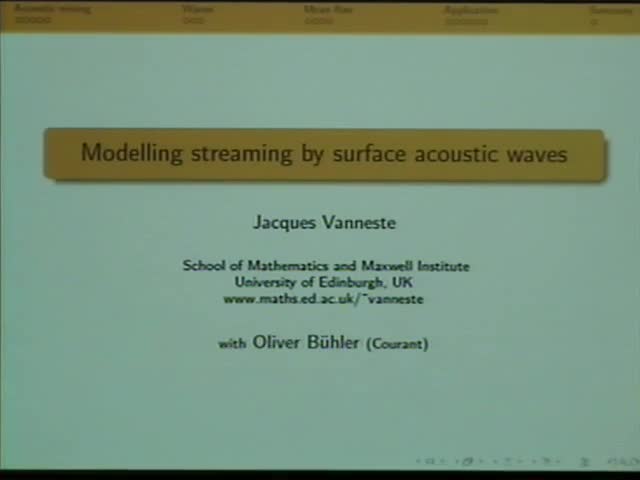Modelling streaming by surface acoustic waves
Presenter
April 12, 2010
Keywords:
- Surface waves
MSC:
- 74J15
Abstract
Keywords: microfluidics, acoustic mixing, surface waves, acoustic streaming
Abstract: Acoustic streaming, the generation of flow by dissipating acoustic waves, provides a promising method for flow pumping in microfluidic devices. In recent years, several groups have been experimenting with a acoustic streaming induced by leaky surface waves: (Rayleigh) surface waves excited in a piezoelectric solid interact with a small volume of fluid where they generate acoustic waves and, as result of the viscous dissipation of these waves, a mean flow. We discuss the basic mathematical model that has been employed in simulations of this type of acoustic streaming and reformulate it to account for the dynamical constraints imposed by vorticity conservation. The formulation proposed makes it clear that dissipative processes in the bulk of the fluid are essential to the streaming, and separates the Eulerian and Stokes contributions to the mean flow. Particular attention is paid to the thin boundary layer that forms at the solid/liquid interface, where both the acoustic waves and their streaming effect are best computed by asymptotic means. A simple two-dimensional model of mean-flow generation by surface acoustic waves is discussed as an illustration.
Joint work with Oliver Buhler (Courant).
